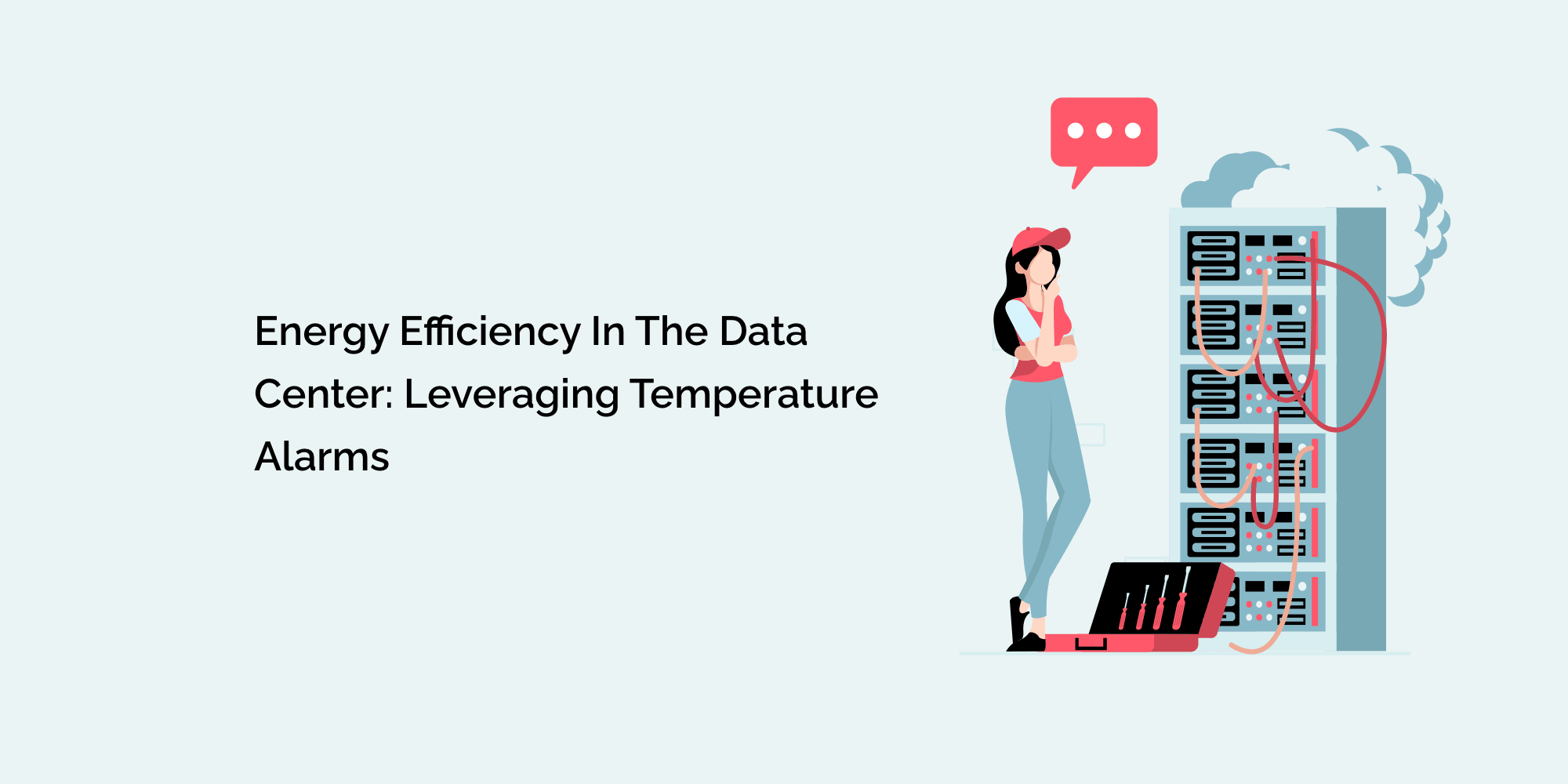Data centers play a critical role in today's digital age, supporting the storage, processing, and delivery of vast amounts of information. However, data centers also consume substantial amounts of energy, leading to increased operational costs and environmental impact. One area where significant energy savings can be achieved is through efficient temperature management.
In this blog, we will explore the importance of energy efficiency in data centers and discuss how temperature alarms, with the help of advanced monitoring devices like Tempcube, can contribute to optimal temperature control, reduce energy consumption, and improve overall data center efficiency.
Understanding Data Center Energy Consumption
Data centers house numerous servers, networking equipment, storage devices, and cooling systems that generate substantial amounts of heat. Cooling these components to maintain optimal operating temperatures is essential for their reliability and performance. However, the cooling process itself is energy-intensive, contributing to a significant portion of a data center's overall energy consumption.
Data centers are designed to operate within specific temperature ranges to ensure equipment reliability and prevent overheating. However, it is common for cooling systems to be set to lower temperatures than necessary, resulting in excessive energy usage. By implementing effective temperature management strategies and leveraging temperature alarms, data center operators can optimize cooling operations, reduce energy waste, and improve overall efficiency.
The Role of Temperature Alarms in Data Center Efficiency
Temperature alarms are critical tools for monitoring and maintaining the optimal temperature range within a data center. They provide real-time alerts when temperature thresholds are exceeded, enabling operators to take immediate corrective actions. Temperature alarms act as early warning systems, helping prevent equipment failures, system downtime, and potential data loss.
Tempcube, an advanced temperature monitoring device, offers data center operators a reliable solution for monitoring temperature levels. Its precision sensors and intelligent alerting system provide real-time temperature data and send instant notifications when temperatures deviate from the desired range. With Tempcube, data center operators can proactively address temperature-related issues, optimize cooling systems, and improve overall energy efficiency.
Benefits of Leveraging Tempcube for Energy Efficiency
-
Accurate Temperature Monitoring
Tempcube's precise temperature sensors ensure accurate monitoring of temperature variations within the data center environment. By having a comprehensive understanding of temperature distribution and trends, operators can identify hotspots, optimize cooling strategies, and make informed decisions to improve energy efficiency.
-
Proactive Temperature Alerts
Tempcube's intelligent alerting system notifies operators in real-time when temperatures exceed predefined thresholds. This allows for immediate action to rectify the issue before it escalates, minimizing the risk of equipment failure, system crashes, and data loss. Prompt responses to temperature alarms help prevent costly downtime and associated business disruptions.
-
Optimization of Cooling Systems
By continuously monitoring temperature levels with Tempcube, data center operators can gain insights into cooling system performance and identify opportunities for optimization. This includes adjusting cooling unit settings, improving airflow management, and implementing targeted cooling solutions where necessary. Optimizing cooling systems based on accurate temperature data can result in significant energy savings without compromising equipment reliability.
-
Reduction in Energy Consumption
Efficient temperature management using Tempcube leads to a reduction in energy consumption within the data center. By setting temperature thresholds to optimal levels, operators can avoid unnecessary cooling, thereby reducing the workload on cooling systems and associated energy usage. Energy savings achieved through improved temperature control contribute to cost reduction and environmental sustainability.
-
Environmental Impact Reduction
Data centers are significant contributors to carbon emissions due to their high energy consumption. By implementing energy-efficient practices, such as leveraging temperature alarms with Tempcube, data center operators can reduce their carbon footprint. Lower energy consumption not only benefits the environment but also aligns with corporate sustainability goals and regulatory requirements.
Conclusion
Energy efficiency is a critical aspect of data center operations, and optimizing temperature control plays a significant role in achieving this goal. By leveraging temperature alarms and advanced monitoring devices like Tempcube, data center operators can enhance temperature management, reduce energy consumption, and improve overall efficiency.
Effective temperature monitoring with Tempcube enables data center operators to accurately track temperature levels, identify hotspots, and optimize cooling strategies. Real-time temperature alerts allow for prompt actions to address temperature deviations, preventing equipment failures and system downtime. By optimizing cooling systems based on accurate temperature data, data centers can achieve significant energy savings without compromising equipment reliability.
Reducing energy consumption in data centers not only leads to cost savings but also has a positive environmental impact. By implementing energy-efficient practices enabled by temperature alarms and monitoring devices like Tempcube, data center operators can reduce their carbon footprint and contribute to sustainability efforts. Lower energy consumption aligns with corporate social responsibility goals and regulatory requirements, promoting a greener and more sustainable future.
Furthermore, the benefits of leveraging Tempcube for energy efficiency extend beyond cost savings and environmental impact. Improved temperature management ensures the reliability and performance of data center equipment, reducing the risk of equipment failures, system crashes, and data loss. By proactively addressing temperature-related issues, data center operators can provide uninterrupted services to their clients and maintain a positive reputation in the industry.
To maximize the benefits of temperature alarms and monitoring devices, data center operators should implement a comprehensive approach to energy efficiency. This includes regularly reviewing temperature thresholds, analyzing temperature data to identify trends and opportunities for optimization, and continuously monitoring and fine-tuning cooling systems. Collaborating with experienced professionals and leveraging industry best practices can further enhance energy efficiency efforts.
In conclusion, energy efficiency is crucial for data centers to reduce costs, minimize environmental impact, and ensure reliable operations. Temperature alarms, in conjunction with advanced monitoring devices like Tempcube, offer data center operators the tools needed to optimize temperature control, reduce energy consumption, and improve overall efficiency. By accurately monitoring temperature levels, receiving real-time alerts, optimizing cooling systems, and reducing energy waste, data centers can achieve significant energy savings, enhance environmental sustainability, and maintain the reliability of their critical infrastructure. Embracing the power of temperature alarms and monitoring technology is a step toward a more efficient and environmentally conscious future for data centers.








